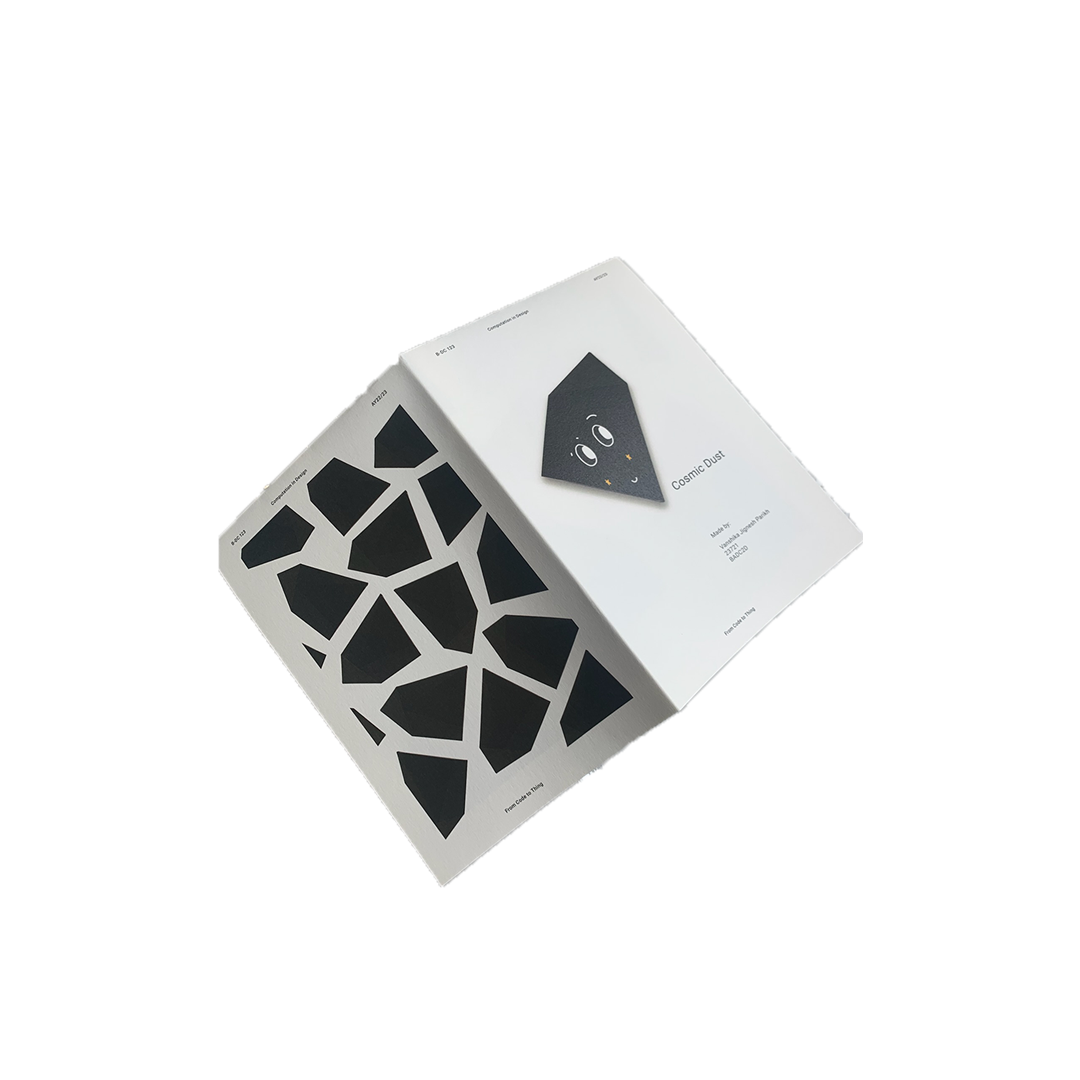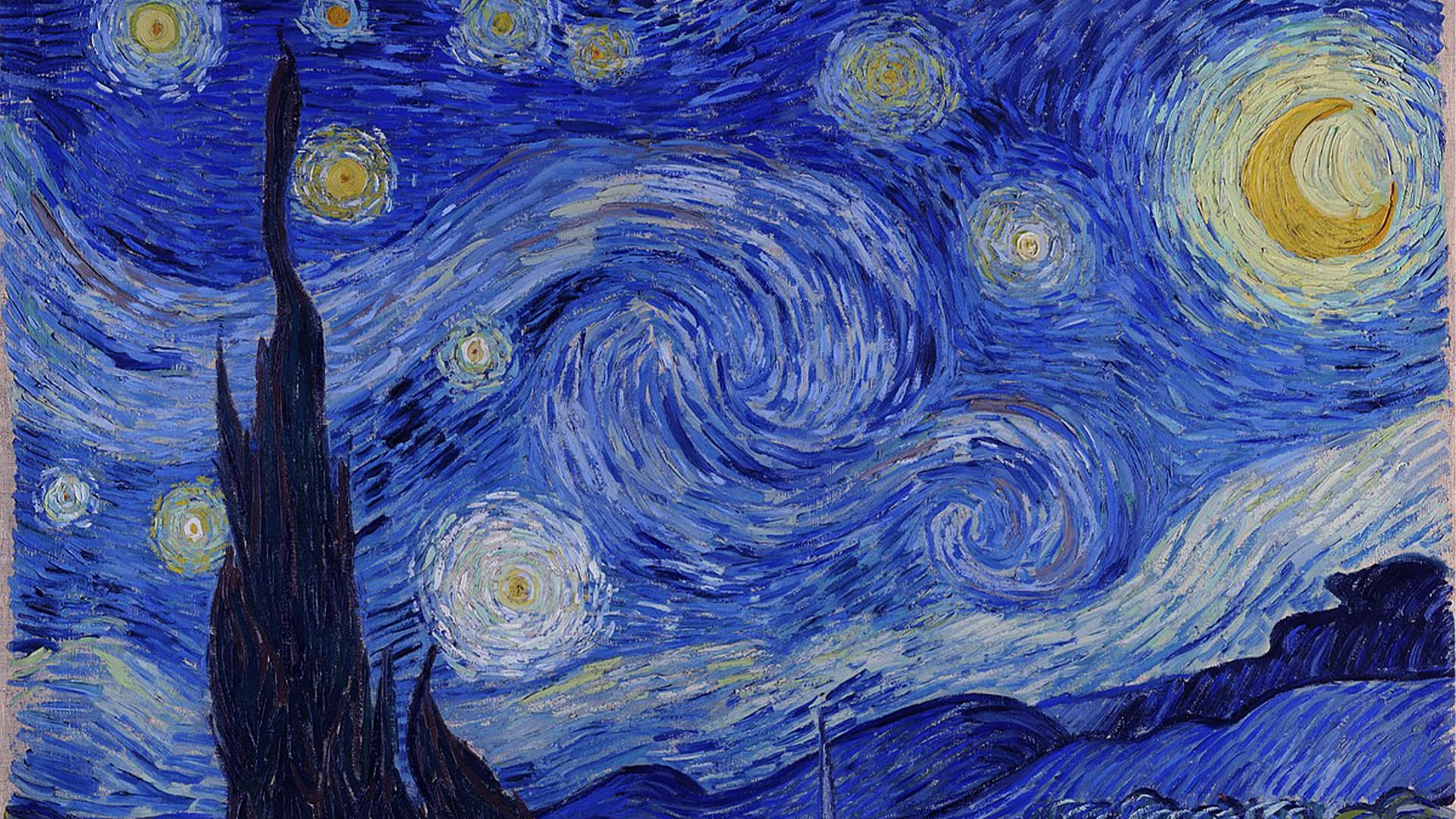
Introduction
‘Starry nights’ is an abstract illusion of a night sky by Van Gogh which he used to find calming and inspiring. Since ‘Starry nights’ installations are growing trendy, this semester, I chose to work on projects that are based on starry nights. In my projects I have tried to use elements from or inspired by Van Gogh’s starry nights’ paintings as if I were recreating it. For example, Starry nights’ swirly abstract of a night sky, a moon or representing just a single star.
Workshops
Over the semester I participated in 4 different workshops covering topics such as Creative Coding, Projection Mapping, Making, and Physical Computing. We discovered some amazing levels of how technology can support expressing a concept or a design, and how technologies that are being used in our routines can be used to create immersive experiences. We majorly explore how our communicated design can impact our audience. Not only do we learn these technologies but we also learn to present our concepts in ways that it is legible to our audience. The main challenge here is to create concepts and designs in a limited amount of time. Here you will find some of the process documentation and deliverables that were created in small teams of up to 3 people or individually.

Workshop one
Coding is a workshop by Andreas Schlegel that looks at the creative application of code in the design process, particularly generative design. Here, we'll look more closely at the usage of code with basic 2D and 3D graphics to produce a number of generative images that can be static, dynamic, or interactive. By giving the designer control over how the computer makes decisions, generative design alters the design process. The objective is to iteratively create several procedures and choose the ones that result in results that are visually compelling. It is used to produce static, moving, or interactive visuals as well as algorithmically generated content in a variety of communities, industries, and futures. Some of its many applications include artistic expression, branding, architecture, and interaction design.
For the project's "Nature encounters" theme, in a group of three we decided to depict an abstract moon. The moon is a representation of ever-changing forces that, like nature, can be seen as representing emotions and dreams. In order to emphasise that it is natural for us to change and be influenced by factors, we wanted to illustrate how the moon changes in an abstract way. Our forms are intricate and complicated, appearing frail and aesthetically pleasing by nature. We tried to create an illusion of a ‘blast’ which is a part of how the moon was formed (during a collision between earth and other planets). Although they appeared metallic in Blender, the resolution caused them to appear plastic. Overall, we're pleased with the results because we were able to effectively and attractively communicate our points.
Tools used: Blender, Visual studio
Link to external outcomes, Augmented Reality

Workshop two
The workshop "Code To Thing" is a workshop by Muhamman Dhiya Bin Rahman that examines translating computer code into actual physical objects. Using 3D software, we create 3D objects from code templates and translate them into printable templates. Here, the emphasis is on the act of creation, which entails creating things through technological or artistic methods. It includes everyone from amateurs to accomplished artisans, with an emphasis on sharing, teamwork, and methods. Making is both a craft and a culture, with the maker movement being a technologically-based extension of open-source and do-it-yourself hardware that converges with hacker culture. In the end, the class promotes designing new gadgets and experimenting with already existing ones.
The theme was "Cosmic dust," which are small particles scattered across space that can't be seen with the naked eye. They're found throughout the universe, including on Earth where an estimated 10 particles per square meter fall daily. The concept of "Fallen Star" explores the idea of a bright star that fell to Earth but still shines like a starry night on the ground. Two methods were used to make the 3D form: using a spray mount to cut and fold the paper template or printing the template in color front and back, but the latter was unsatisfactory. The process of exploring different ways to make the 3D form was enjoyable.
Tools used: Blender, pen knife, colour paper, double-sided tape

Workshop three
The Screens exercise introduced us to the fundamental uses of projection mapping during a workshop led by Joanne Ho. In this practical class, we learned how to project and map images utilising coded, static, and moving images onto non-rectangular surfaces. With the aid of projection mapping technology, any surface other than a flat screen may be illuminated. Due to its versatility in converting anything into a visual surface, it has grown in popularity as a method of creating visually immersive settings that transform a room. These surfaces can include constructed sets, structures, and even landscapes. In this session, we create a real object from scratch and imprint our own pictures onto it.
In a group of three, we have decided to recreate starry nights and impact our audience with a sense of calm. Inspired with the swirly stroke, we created the on the plain side, and we created an abstract of moving stars by using a video of bubbles like forms in motion. We believed that a connection to nature brings calm and peace to people but day by day we keep losing the touch of nature as deforestation rises to build homes and commercial buildings. Hence, we map a vision of nature onto a surface to bring a sense of ‘calm’ to the audience. The outcomes were very satisfying and it was intriguing how we could project our visuals on something more than a flat form.
Tools used: paper, pen knife, glue, p5js

Workshop four
A physical computing workshop led by Tan Zi Jie Jake sought to explore straightforward input and output techniques using electronics to produce tactile and tangible experiences. The term "physical computing" refers to computer-mediated interactions with the physical environment, such as those made possible by the Internet of Things or robotics. Even though it might seem technical, it helps connect tangible items, computer hardware, and software for both technical and artistic disciplines like design and art. The workshop's main goal was to create a straightforward physical interaction that would show how physical input may result in digital output and vice versa. Participants investigated the possibility of physical computing in design using prepared materials, electronic components and Arduino.
In a group of three, we created an illusion of starry nights, focusing on the theme of "home" with their project "Sense of Home". They used coded visuals to represent the transition from day to night, where the house captures light and spreads warmth. As the door opens, the house transforms into daytime, and as it closes, darkness and nighttime appear. Initially, we used complicated visuals but simplified it, to explore design on different levels, with the use of a light sensor. The project aimed to bring feelings alive through abstract visuals and interactive mechanisms, emphasising the importance of light and emotions in creating a sense of home.
Tools used: Arduino, Pen knife, Glue, Cardboard

"I often think that the night is more alive and more richly coloured than the day."
by Van Gogh

Conclusion
What have I learned over the course of this semester? Main challenge over the semester was to brainstorm and execute ideas in a limited amount of time. It required complete focus and time management. With this pace, I learned how to manage my time and I discovered ways in which I can maintain strong focus. I also learned interpersonal skills by working in groups. I learned how to communicate and coordinate. And I got complete clarity of the various ways these technologies can be used.
Some of my most interesting findings this semester are? This semester I learned how beautiful creations like ‘Future world, Art science museum’ are projected, how physical computing is used in our routines, for example: Our smartphone touch screen. Augmented reality and machine calligraphy were also new to me as I was not completely familiar with the concept before. I also discovered in a machine calligraphy workshop by Andreas Schlegal how it inspires me. Overall this semester has surprised me with new interests and helped me push my boundaries and take risks to learn new things.
What are some of my achievements? This semester, we had to present our ideas in front of everyone, every next session. With this, I overcame my stage fear. I learned how much the way we present matters and now I believe I have gotten better at communicating my ideas.








































